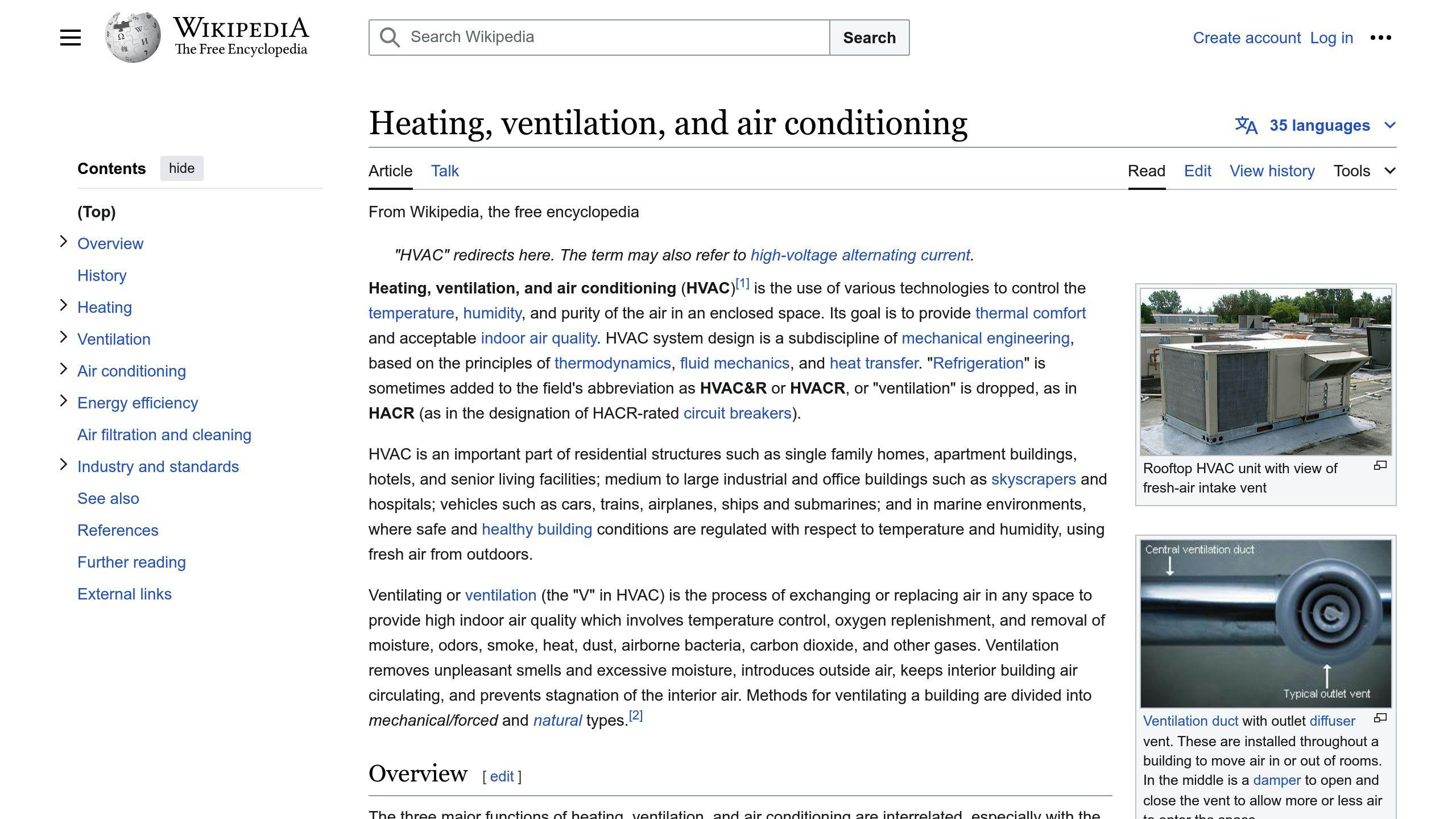Checklist: Preparing Your Facility for Winter
Prepare your facility for winter with this essential checklist covering HVAC, plumbing, electrical, and safety measures to prevent costly damage.

Get your facility winter-ready with this comprehensive checklist. Here's what you need to do:
- HVAC: Change filters, clean ducts, set thermostats
- Plumbing: Insulate pipes, fix leaks, test valves
- Electrical: Check generators, test emergency lights
- Exterior: Repair roof, clean gutters, seal windows/doors
- Outdoor safety: Inspect walkways, arrange snow removal
- Indoor comfort: Check insulation, fix drafts
- Emergency planning: Create plan, train staff, stock supplies
Why it matters:
- Prevent costly repairs (e.g., frozen pipes cost $10,800 on average)
- Keep occupants safe and comfortable
- Avoid business disruptions
Don't wait for the first frost. Start prepping now to save time, money, and headaches later.
| Area | Key Tasks | Why It's Important |
|---|---|---|
| HVAC | Change filters, clean ducts | Improves efficiency, air quality |
| Plumbing | Insulate pipes, fix leaks | Prevents freezing, water damage |
| Electrical | Check generators, test lights | Ensures backup power, safety |
| Exterior | Repair roof, clean gutters | Prevents leaks, ice dams |
| Safety | Inspect walkways, plan snow removal | Reduces accidents, liability |
Take action today. Your winter-ready facility starts here.
Related video from YouTube
HVAC System Checks

Your HVAC system is crucial for winter comfort. Here's how to keep it running smoothly:
Change Air Filters
Dirty filters strain your system and increase costs. Replace them every 1-3 months. Clogged filters can cause overheating and shutdowns.
Check Ducts and Vents
Clean ducts improve airflow. Look for gaps that waste heat. Keep vents clear to avoid blockages.
Set Thermostats
Program your thermostat to save energy:
- At home: 68-70°F
- Away/sleeping: 7-10°F lower
This can cut heating costs by up to 10%.
Service Heat Pumps
Heat pumps need bi-annual care:
- Fall: Heating check
- Spring: Cooling check
Pro tune-ups fix wear and boost performance.
Monitor Humidity
Balanced humidity (30-50%) improves comfort and efficiency.
| Task | Frequency | Benefit |
|---|---|---|
| Replace filters | 1-3 months | Better efficiency, air quality |
| Clean vents | Monthly | Maintains airflow |
| Pro HVAC check | Yearly (fall) | Prevents issues, extends life |
| Test furnace | 3x pre-winter | Ensures proper operation |
"The first step to prevention is an inspection." - Carrier Rentals
Don't let winter catch you off guard. A well-maintained HVAC system keeps you warm and saves money. Book a pro check-up now to avoid mid-winter headaches.
2. Plumbing Prep
Winter can mess up your facility's plumbing. Here's how to keep things flowing and avoid costly damage:
Insulate Pipes
Wrap exposed pipes in foam insulation. Focus on:
- Exterior walls
- Unheated areas
- North-facing sections
This simple step can stop freezing and bursting.
Find and Fix Leaks
Look for:
- Drips or puddles
- Water stains
- Weird sounds
- Changes in water pressure
Fix leaks fast to avoid bigger problems when it gets cold.
Test Valves and Shutoffs
1. Find your main water valve
2. Test it to make sure it works smoothly
3. Mark it clearly for quick access
Show your staff how to shut off water if pipes burst.
Clean Drains
Clear all drains to prevent backups:
| Area | Action |
|---|---|
| Gutters | Remove leaves and debris |
| Floor drains | Flush with water |
| Sump pump | Clean and test |
Clean drains help avoid flooding during winter thaws.
"Maintenance is more important than you may think, especially when it comes to ensuring your plumbing can last through the Ohio and Northern Kentucky winter without issue." - HELP Plumbing, Heating, Cooling, and Drains
Pro tip: Keep your thermostat between 60-68°F (15.5-20°C), even in unused areas. This keeps pipes warm enough to prevent freezing.
A little prep now saves big headaches later. Not sure about any steps? Call a pro plumber for a winter check.
3. Electrical System Readiness
Winter storms can knock out power for days. Here's how to prep your facility's electrical systems:
Check Generators
1. Test backup generators monthly:
Run for 30 minutes under load, check oil and coolant, and inspect belts and hoses.
2. Maintain fuel supply:
Keep the tank 3/4 full, treat fuel with STA-BIL® Storage, and add anti-gel for diesel below 32°F.
3. Clear a 2-foot space around the generator
"Get your generator professionally serviced once or twice a year. It's key for reliability."
Test Emergency Lights
Push the test button monthly, do a full discharge test yearly, and replace batteries every 3-4 years. Keep records.
Inspect Wiring
Look for frayed wires, loose connections, overheating signs, and water damage. Have a pro fix any issues.
Check Backup Fuel
| Fuel Type | Action |
|---|---|
| Diesel | Fill tank, add anti-gel |
| Propane | Fill to 80% |
| Natural gas | Check utility connection |
Pro tip: Set up 24/7 remote monitoring for critical systems.
Don't wait for a storm. Prep your electrical systems now to keep things running smoothly all winter.
4. Building Exterior Care
Winter can wreak havoc on your facility's exterior. Here's how to protect it:
Check and Fix Roof
Spot damaged or missing shingles and fix them ASAP. Water leaks = big trouble.
"Clean out your gutters and downspouts first. Blockages from leaves and debris can lead to ice dams, damaging your roof and eaves when melted snow can't flow." - Eiseman, Blog Author
Pro tip: Get a pro roof check each fall. They'll catch hidden issues before they break the bank.
Clean Gutters
Clear gutters and downspouts of debris. This prevents ice dams that can mess up your roof and walls.
| Task | How Often? |
|---|---|
| Quick look | Monthly |
| Deep clean | Twice yearly |
| Pro check | Once a year |
Seal Windows and Doors
Stop drafts, keep heat in, cut energy bills. Here's the drill:
- Scrape off old caulk
- Apply fresh silicone caulk
- Add weather stripping
- Use window insulation film
In a pinch? Try bubble wrap on windows. Not pretty, but it works.
Check Siding
Look for cracks or gaps. Water can sneak in, freeze, and cause more damage.
Quick test: Walk around after rain. Wet spots on siding? You might have a problem.
5. Outdoor Safety Steps
Winter's coming. Is your facility ready? Here's how to keep everyone safe outside:
Check Walkways and Parking
Walk your property. Look for:
- Cracks in sidewalks and lots? Fill 'em.
- Uneven surfaces? Level 'em.
- Steps and curbs? Paint 'em bright.
Plan Snow Removal
Don't wait for snow. Act now:
- Pick your snow removal gear
- Choose where to pile snow (away from traffic)
- Book snow removal services ASAP
"Early booking for snow removal? Smart move. It lets companies prep and have resources ready before winter hits." - Snow Removal Pro
Stock Up on De-icing Materials
Get these ready:
- Rock salt (for above 12°F)
- Calcium chloride (for colder temps)
- Sand (for grip on ice)
| Material | Works Down To | Good | Bad |
|---|---|---|---|
| Rock salt | 12°F | Cheap, easy | Hurts concrete |
| Calcium chloride | -25°F | Fast-acting | Pricier |
| Sand | Any temp | Adds grip | Doesn't melt ice |
Prep Landscaping
Protect your plants:
- Wrap young trees
- Mulch flower beds
- Drain sprinklers
Check Outdoor Lights
Good lighting stops accidents:
- Swap dead bulbs
- Clean light fixtures
- Add temp lights for snow removal spots
Clear paths within 24 hours of snowfall. It's often the law and keeps your property safe.
6. Indoor Comfort Prep
Winter's coming. Let's make your facility cozy and cut costs.
Check Insulation
Good insulation traps heat and lowers bills. Do this:
- Check walls, floors, and attics
- Add foam where needed, especially in old buildings
- Focus on attics - they leak heat like crazy
"90% of U.S. homes lack proper insulation", says the North American Insulation Manufacturers Association.
In cold spots like Michigan, aim for R-Value over 49. That's about 16-18 inches thick.
| Insulation Type | R-Value | Best For |
|---|---|---|
| Loose-fill Fiberglass | 60 | Very cold climates |
| Blown-In Cellulose | 49 | Cold climates |
| Spray Foam | 3.5-6.5 per inch | Sealing gaps |
Stop Drafts
Drafts jack up heating bills. Here's how to fix them:
- Swap old weather stripping on windows and doors
- Use weatherproof caulk around windows, doors, and outlets
- Adjust door thresholds to close gaps
- Cover windows with plastic film for cheap insulation
The U.S. Department of Energy says, "Up to 12% of heat loss happens around windows and doors."
Boost Indoor Air
Keep air healthy when it's freezing outside:
- Open kitchen and bathroom cabinet doors
- Let warm air hit pipes on outside walls
- Test your thermostat
- Think about upgrading to a smart thermostat to save energy
Good indoor air keeps people healthy and productive. Don't skimp on it.
7. Emergency Planning
Winter storms can hit hard and fast. Is your facility ready? Here's how to prep:
Make a Winter Emergency Plan
Create a plan that covers:
- How you'll communicate during storms
- Where people should go if they need to leave
- Who does what when things go south
Don't wait for the first snowflake. Get your plan ready now.
Train Staff for Winter Woes
Your team needs to know how to handle winter problems. Teach them:
- How to spot frostbite and hypothermia
- Basic first aid for cold injuries
- How to walk on ice without falling
- The right way to shovel snow
"Training is a major factor in keeping employees safe." - Karen Hamel, Regulatory Expert and Trainer for Halen Hardy, LLC.
Stock Up on Emergency Supplies
Keep these on hand:
| Item | Why You Need It |
|---|---|
| Blankets | Warmth during blackouts |
| Flashlights & batteries | Light when power's out |
| First aid kits | Treat injuries on-site |
| Non-perishable food | Feed stuck staff |
| Water | Hydration if pipes freeze |
| Battery-powered radio | Get storm updates |
Check and update your stash regularly.
Set Up a Communication System
Make sure you can reach everyone fast:
- Set up a phone tree
- Use mass texts
- Have a backup plan (like walkie-talkies)
Test your system before winter hits.
8. Getting Professional Help
Sometimes, you need to call in the pros for winter prep. Here's why and how:
Why Hire Winter Experts
Pros can save you time, money, and hassle. They offer:
- Specialized knowledge
- Right equipment
- Time-saving
- Reduced risk
Book Professional Checks
Don't wait. Here's how to get expert help:
1. HVAC Inspections
Book early. HVAC companies get busy as winter approaches.
| Service | Avg. Cost | Includes |
|---|---|---|
| Full HVAC Check | $300 | Thermostat calibration, coolant check, electrical inspection |
| Furnace Inspection | $80-$100 | Safety checks, efficiency testing |
| AC Inspection | $100-$150 | Coil cleaning, refrigerant level check |
"Annual HVAC tune-ups cut energy bills, reduce repairs, and extend system life." - Trillium Facility Solutions
2. Snow Removal Services
Look for:
- Commercial-grade equipment
- Quick response times
- 24/7 availability
- Proper insurance (ask for proof!)
3. Roof Inspections
Get your roof checked before snow hits. Pros spot weak points and prevent leaks.
4. Plumbing Checks
Have a plumber inspect your pipes. They'll add insulation and fix weak spots.
9. Full Checklist
Here's your go-to checklist for winter-proofing your facility:
HVAC System
- [ ] Change air filters
- [ ] Clean ducts
- [ ] Set thermostats to 55°F (13°C) minimum
- [ ] Service heat pumps
- [ ] Check controls
- [ ] Book pro inspection
Plumbing
- [ ] Insulate exposed pipes
- [ ] Fix leaks
- [ ] Test valves
- [ ] Clean drains
- [ ] Shut off outdoor water
- [ ] Remove hoses
- [ ] Find main shut-off valve
Electrical System
- [ ] Check generators
- [ ] Test emergency lights
- [ ] Inspect wiring
- [ ] Check backup fuel
Building Exterior
- [ ] Repair roof
- [ ] Clean gutters
- [ ] Seal windows and doors
- [ ] Check siding
- [ ] Trim weak branches
Outdoor Safety
- [ ] Inspect walkways
- [ ] Arrange snow removal
- [ ] Stock de-icing materials
- [ ] Prep landscaping
- [ ] Winterize irrigation
- [ ] Check outdoor lights
Indoor Comfort
- [ ] Check insulation
- [ ] Fix drafts
- [ ] Improve air quality
Emergency Planning
- [ ] Create winter plan
- [ ] Train staff
- [ ] Stock supplies
Professional Services
- [ ] Book roof check
- [ ] Schedule HVAC service
- [ ] Arrange plumbing inspection
- [ ] Review insurance
Communication
- [ ] Update tenants
- [ ] Share safety tips
Miscellaneous
- [ ] Cover pools
- [ ] Secure common areas
- [ ] Budget for heating costs
10. Wrap-up
Winter prep isn't just about comfort. It's about keeping your facility safe and running smoothly. By tackling these checklist items, you're setting up your building to handle whatever winter throws at it.
Early action prevents costly repairs. A well-maintained facility keeps occupants safe. Proper prep helps avoid business disruptions.
Don't wait for the first frost. Use this checklist now to get ahead of winter's challenges. Your future self (and your facility's occupants) will thank you.
"If pipes freeze, a business or school could be forced to close temporarily because life safety cannot be assured", warns the National Fire Protection Association.
This shows why thorough winter preparation matters. By following the checklist, you're not just ticking boxes—you're safeguarding your facility's operation and everyone who relies on it.
Take action today. Your winter-ready facility starts here.
